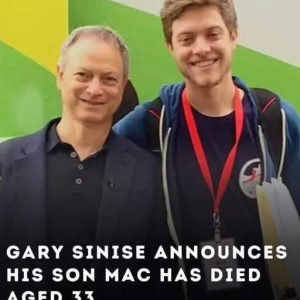The first public reports of a mass-shooting at a church in Grand Blanc, Michigan, struck with the kind of abruptness that defines modern emergency alerts—swift, alarming, and deeply unsettling. What should have been an ordinary day of reflection and communal togetherness inside a place of worship was instead shattered by the terrifying confirmation from law enforcement that an active shooter had opened fire. Churches occupy a unique emotional space in American life: they serve as sanctuaries, social anchors, and sites of spiritual solace. An attack in such a setting is therefore especially disturbing, not only because of the immediate physical danger but also because of the symbolic violation of a space associated with peace. According to the early updates, the violence erupted quickly, without warning, and with devastating consequences. The sudden shift from quiet worship to chaos underscores how fragile the sense of safety can be, particularly in a society where public space and violence intersect with increasing frequency. Authorities swiftly emphasized the seriousness of the situation, making clear that this was not a misunderstanding or minor disturbance but a major emergency requiring immediate, coordinated action. The gravity was apparent the moment the words “active shooter” were confirmed—words that now trigger instant recognition, fear, and a familiar sequence of law-enforcement protocols across the nation.
In the immediate aftermath, police reported that there were “multiple victims,” a phrase that carries chilling weight even in its vagueness. While early information during such crises is almost always incomplete—because responders must prioritize containment, medical triage, and securing the scene over gathering detailed numbers—the acknowledgment of multiple casualties suggests the scale of harm inflicted. Each life touched by violence inside the church represents not only a physical injury or death but an expanding circle of trauma affecting witnesses, loved ones, and the broader community. The uncertainty surrounding the exact number of victims only amplifies fear and anxiety, as families wait desperately for updates and community members grapple with the magnitude of what has unfolded. “Multiple” in this context is not just a statistic—it is a representation of lives interrupted, of the psychological shock that witnesses will carry, and of the long-lasting effects that ripple through a congregation now forever altered. In sacred spaces, the emotional toll is heightened: worshippers often know each other well, forming close-knit communities where violence feels intensely personal. The blunt acknowledgment of multiple victims therefore signals not just physical harm but a collective emotional fracture that will likely take years to mend.
As law enforcement continued to update the public, another critical piece of information emerged: the suspect was “DOWN.” In the language of emergency response teams, this phrase signifies a decisive shift in the event’s timeline. It indicates that the shooter is no longer an active threat—whether by being incapacitated, detained, or deceased. This confirmation marks the turning point between active chaos and the beginning of stabilization. While the earlier moments of the crisis are about survival, evacuation, and tactical engagement, the moment the suspect is neutralized allows responders to redirect their efforts toward rescuing victims, assessing injuries, transporting the wounded, and establishing safer pathways into and out of the affected building. It is often the point at which fear begins to give way to urgent relief, though it does not erase the trauma of what has already occurred. For officers, the announcement that the shooter is down is both procedural and deeply human: procedural because it signals that the tactical phase has ended; human because it conveys that lives may now be saved without the threat of ongoing gunfire. To the wider public, the phrase also provides a momentary breath of reassurance, confirming that the immediate danger has passed even as the community braces itself for the painful details that always follow.
With the shooter no longer a threat, authorities announced that the area had been secured and that no additional attackers were present. This step is crucial: before paramedics, firefighters, and investigative teams can safely enter, the scene must be cleared of all potential risks. Active shooter environments are complex—responders must consider the possibility of additional assailants, the uncertainty of hidden threats, and even structural dangers created during the chaos. Once officials confirmed that the threat was contained, a new phase of the emergency response began. Securing the site does more than create physical safety—it restores a measure of psychological stability to a community gripped by panic. Families waiting for news outside the church or in nearby neighborhoods rely on this verification to know that the danger is no longer unfolding. Inside the building, the transition allows medical crews to reach victims without delay, where minutes can determine life or death. It also enables investigators to start documenting the scene, gathering initial impressions, and preparing to reconstruct the timeline of events. In the hours that follow such tragedies, securing the area is foundational: it opens the door for care, for clarity, and for the long process of understanding what occurred and why.
Compounding the horror of the shooting was the confirmation that the church itself was burning. Whether the fire was directly connected to the attack or emerged as an unrelated consequence, its presence introduced an entirely new layer of urgency and devastation. A burning building complicates every aspect of emergency response. For victims possibly still inside, it introduces another life-threatening hazard. For firefighters, it demands an immediate and aggressive response, even as they navigate a crime scene. The flames also pose a danger to evidence that might be crucial for investigators attempting to reconstruct the timeline of events. Moreover, a church fire carries symbolic weight: it represents not only physical destruction but the loss of a community’s spiritual home. Places of worship are repositories of memory, ritual, history, and meaning. They host weddings, funerals, baptisms, and lifetime commitments—moments that define families across generations. To see such a space engulfed in flames adds emotional violence to physical tragedy, leaving congregants facing not only personal loss but the destruction of an anchor in their lives. Whether or not the blaze was intentionally set, its presence in the midst of an already devastating crisis intensified the shock, complicating rescue efforts and deepening the emotional wounds inflicted on the community.
As news of the shooting and the fire spread, the event was described as “absolutely evil,” a phrase reflecting the immediate moral outrage and raw emotional reaction felt by many. When tragic events unfold in sacred spaces, the sense of violation runs deep. The call for prayers for everyone affected signals the community’s attempt to find unity and comfort in the face of sudden horror. Expressions of compassion and solidarity often emerge instinctively during times of collective trauma, offering a way for people to process grief, fear, and shock. Even before full details are known—before names are released, before motives are understood, before the timeline is clarified—communities seek meaning and connection as they attempt to make sense of senseless violence. The emotional response is as much a part of the story as the factual updates; it reflects the human cost beneath the headlines. The tragedy at the Grand Blanc church underscores the fragility of public spaces and the deep scars left when violence enters them. While investigators will continue gathering facts and authorities will eventually release fuller accounts of what happened, the immediate aftermath is defined by anguish, uncertainty, shared grief, and the collective hope that those harmed find healing and that the community can rebuild from a day that altered its history forever.





